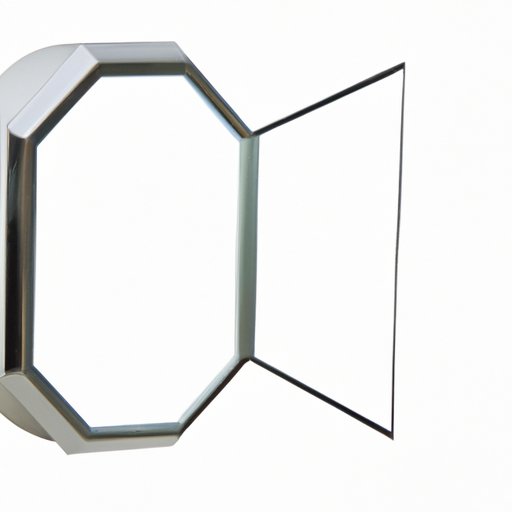
How to Tell if a Mirror is Two-Way
Have you ever been in a public restroom or other facility with a mirror, and wondered if it was a two-way mirror? The thought of someone watching you through what you thought was a regular mirror can be unsettling and violate your privacy. In this article, we’ll explore some tests you can do to figure out if a mirror is two-way and discuss ways to protect your privacy in these situations.
The Fingertip Test
One test you can do is the fingertip test. Place your fingertip on the surface of the mirror and observe if there is any gap between your finger and its reflection. If there is a gap, it’s likely a two-way mirror because the reflective surface is on top of a concealed observation area.
Using a Flashlight
Another way to tell if a mirror is two-way is by using a flashlight. Turn off the room’s lights and shine a flashlight on the mirror. If you can see through the mirror, it may be two-way because, in a normal mirror, the reflective surface should block light from passing through.
The Scratch Test
You can also try the scratch test by scratching the mirror surface with a coin or other object. If it doesn’t scratch easily or shows marks, it could be two-way. Regular mirrors usually have their reflective surface on top of a layer of glass, while two-way mirrors feature a thinner, more durable reflective surface that can resist scratches.
Covering the Reflective Surface with an Object
Another test you can conduct to identify a two-way mirror is to place an object in front of it and observe if its reflection is visible on the other side of the mirror. If you can still see the object’s reflection, the mirror may be two-way because there is an observation area behind the reflective surface.
Examining the Mirror’s Mounting
Lastly, you can examine the mirror’s mounting hardware for any gaps or any visible signs of adhesive. If there is a gap or visible adhesive, it could be a sign of a two-way mirror. Regular mirrors usually have mounting hardware that is flush against the wall, while two-way mirrors have a concealed observation area behind the reflective surface that requires special mounting hardware.
Conclusion
Identifying whether a mirror is two-way depends on conducting some simple tests. While you can’t always detect the presence of a two-way mirror, taking note of the above signs can help you to make an informed decision when scrutinizing your environment. If you suspect a mirror is two-way, covering it with something and alerting relevant authorities or reporting entities is an important step in safeguarding privacy.
Protecting your Privacy in Spaces with Two-Way Mirrors
When you’re uncertain about whether a mirror is two-way or not, it’s important to consider taking action to preserve your privacy. In addition to the tests described above, it’s also prudent to learn about how to detect other forms of surveillance and security devices, such as hidden cameras or listening devices. Some companies also offer privacy films that make observation through two-way mirrors difficult or impossible. If you’re in a space like a public restroom or changing room that you suspect might have two-way mirrors, consider requesting that the management publish a policy outlining where cameras and mirrors are located on the premises. These small yet important steps are imperative not just for your comfort, but for your safety as well.




